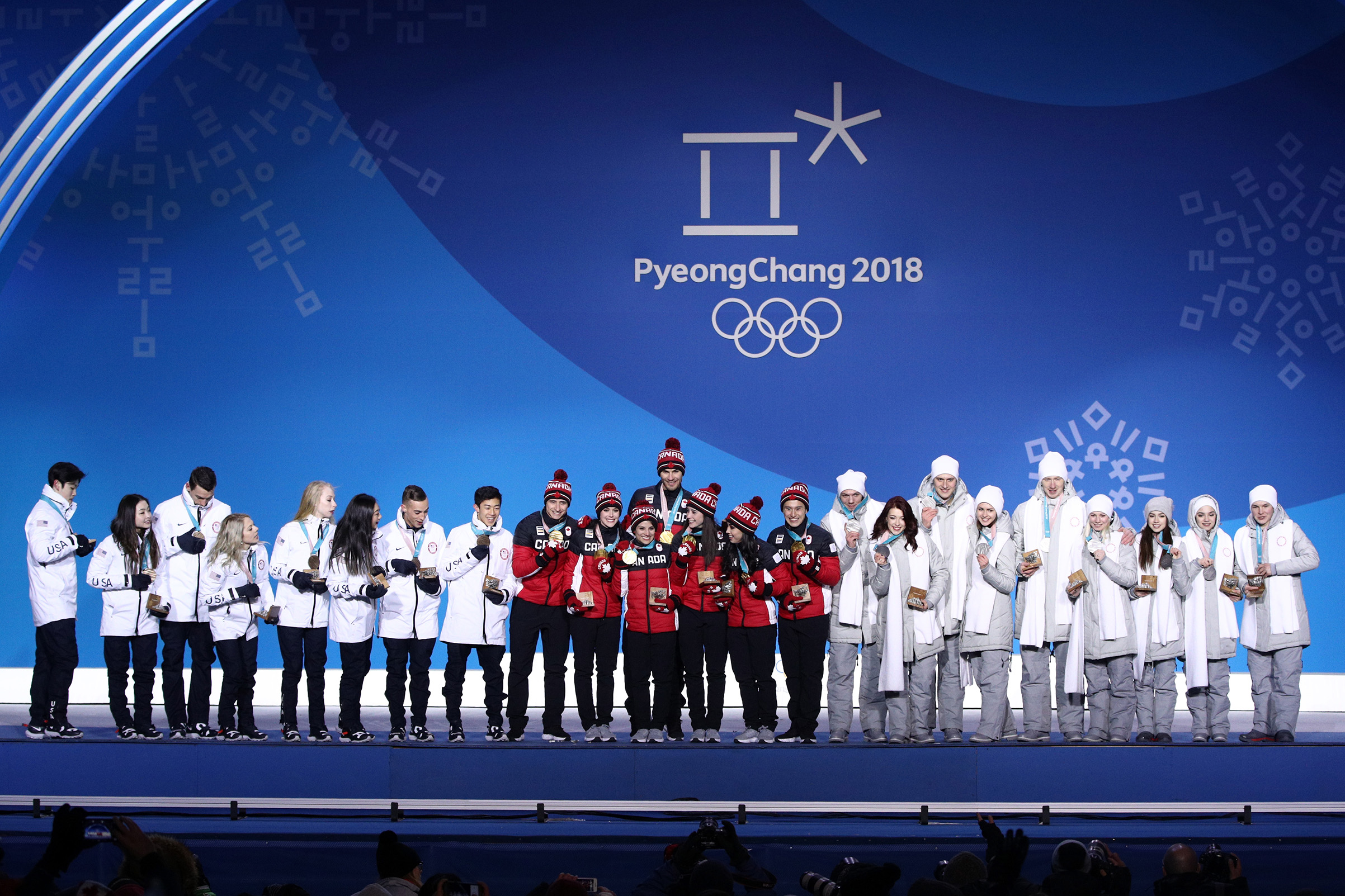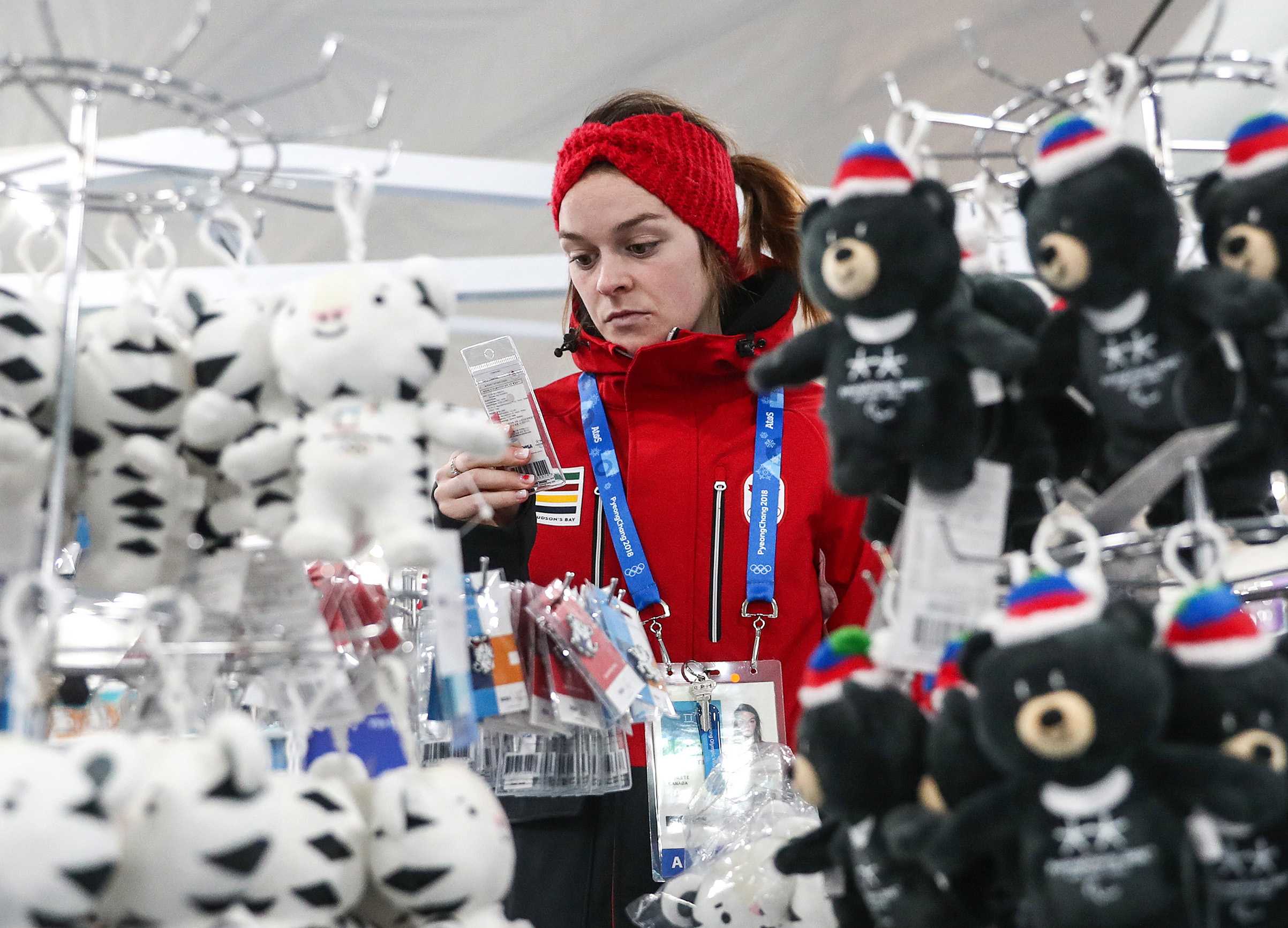Why Are Olympic Athletes Being Given Stuffed Animals Instead Of Metals?
If y'all've tuned in to the 2018 PyeongChang Winter Olympic Games this calendar month, you may have been confused to see winning athletes beingness handed not medals, but stuffed animals. Here's what you demand to know about why Olympic medalists are getting stuffed animals when they win.
Why don't the Winter Olympics winners go their medals right away?

Silver medalists Squad Olympic Athlete from Russian federation, gold medalists Team Canada and bronze medalists Team United States celebrate during the medal anniversary after the Figure Skating Team Event at Medal Plaza on Feb. 12, 2018 in Pyeongchang-gun, South Korea.
Adam Pretty—Getty Images
Viewers of the Summer Olympics may remember winners getting medals soon after completing their events. But since there are fewer events in the Winter Olympics, organizers are able to agree a medal ceremony every night for that twenty-four hours's winners. At the much busier and more crowded Summer Olympics, such a ceremony would be difficult to manage.
What is the blimp beast?

A costly toy of the PyeongChang 2018 Winter Olympic Games mascot Soohorang at a bloom ceremony for the ladies' cross-country skiing individual sprint classic event during the 2018 Winter Olympic Games, at the Alpensia Cross-Land Skiing Centre
Sergei Bobylev—TASS/Getty Images
The keepsake that rewards Olympic medalists this year is a white tiger named Soohorang, the mascot of the 2018 PyeongChang Olympics. The tiger is an important effigy in Korean civilisation — a regular tiger was the mascot of the Seoul Olympics in 1988 — and the white tiger is especially revered.
According to the Olympic website, the mascot takes its name from "sooho," which means protection, and "ho-rang-i," which means tiger. The name is also a reference to "Jeong-seon A-ri-rang," a folk song from the Gangwon Province where the games are taking place.
"The Soohorang is very beautiful and very pretty," PyeongChang organizing committee spokesperson Sung Baik You told USA Today. "The athletes who take received the Soohorang have been very happy with it."
What happened to the flowers?
Previous Olympic Games take seen athletes awarded bouquets of flowers, but at the 2016 Rio Olympics flowers were deemed unsustainable. The floral tradition does live on in Soohorang's hat, which is adorned with paper flowers; according to the PyeongChang 2018 website, the symbol is a nod to "Uhsahwa," paper flowers given to those who passed their national exams during Korea's Joseon Dynasty (1392-1910).
So … can I buy one?

A girl seen past suffed toys of Soohorang and Bandabi, the official mascots of the 23rd Winter Olympic Games and the 12th Wintertime Paralympic Games in Pyeongchang respectively, on sale in the Olympic Hamlet ahead of the 2018 Winter Olympic Games.
Valery Sharifulin—TASS/Getty Images
You may non be able to compete for aureate, only in i manner you could exist like Chloe Kim, Red Gerard and the other medalists: for $55, you tin buy your own Soohorang on Amazon.
Source: https://time.com/5157532/stuffed-animals-pyeongchang-olympics-2018/
Posted by: edwardshimpat.blogspot.com

0 Response to "Why Are Olympic Athletes Being Given Stuffed Animals Instead Of Metals?"
Post a Comment